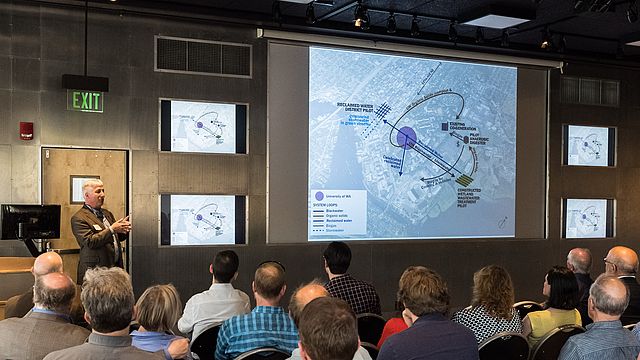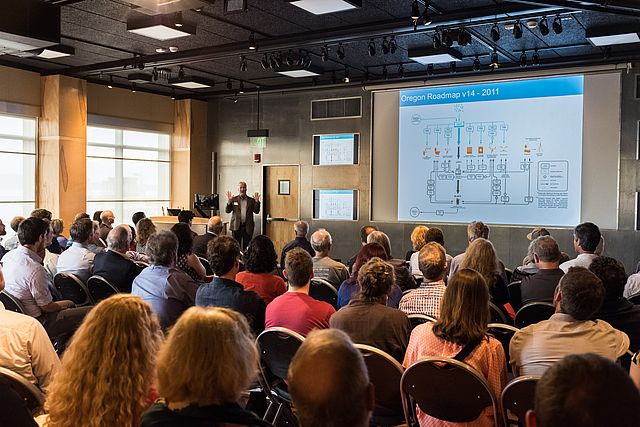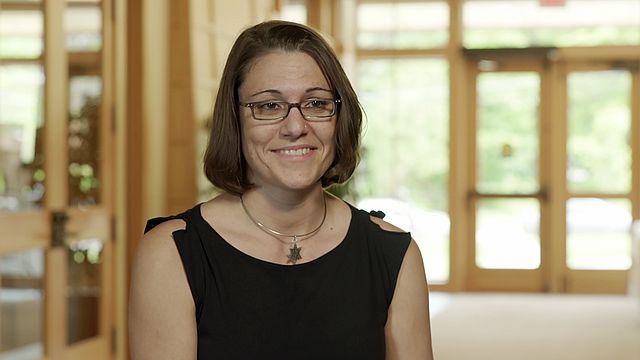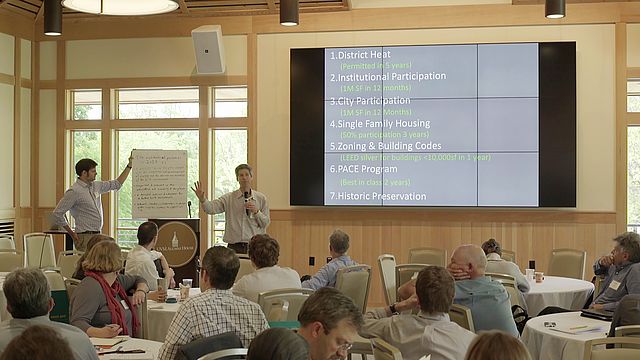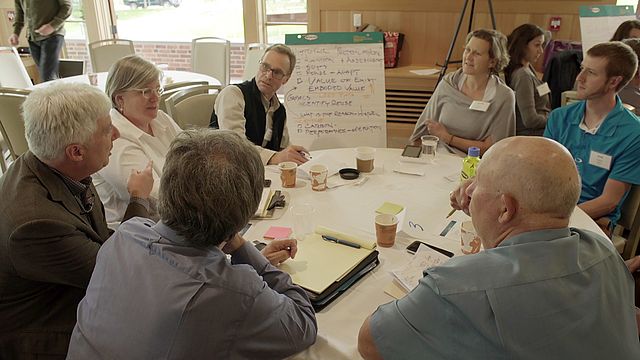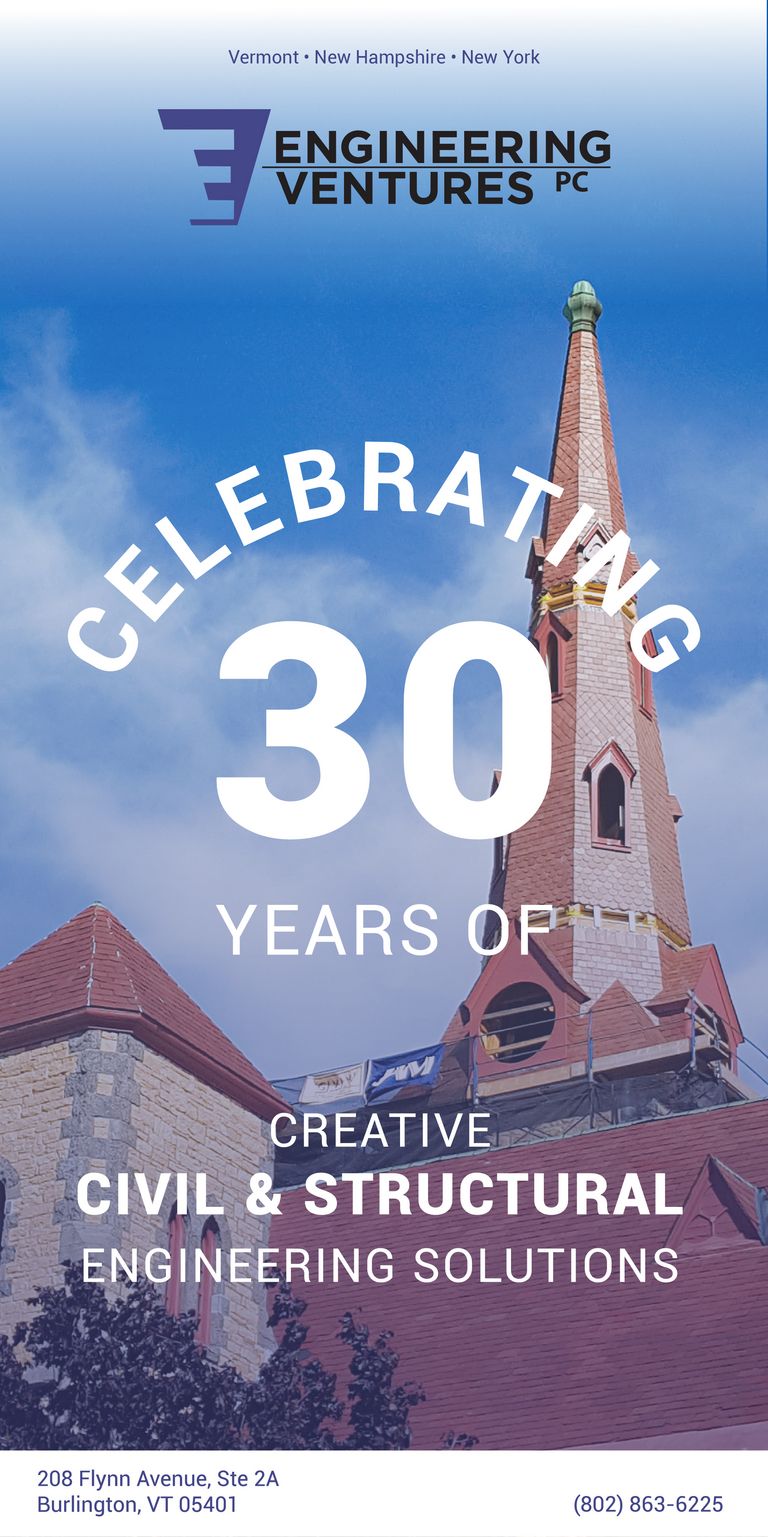The 2017 COTE Summit: A Recap of My Experience
By Sam Beall, AIA
On June 8 and 9, AIA members from New Hampshire, Maine and Boston joined a group of AIAVT members in Burlington for the third Northern New England Committee on the Environment (COTE) Leadership Summit. The very first summit was spearheaded by AIA Maine member Gunnar Hubbard in order to put together a regional off-shoot of National's COTE that could focus on challenges specific to our shared climate, building types, and topography.
This year’s theme, “Leadership—Beyond the Building,” was developed to help architects learn how to advocate for more sustainable structures and environments within their own regions and communities. The summit began with a keynote presentation on June 8 at the Leahy Echo Science Center on the shores of Lake Champlain. The keynote speaker was Clark Brockman, AIA, of Sera Architects, Portland, Oregon. A national leader in architecture and planning and climate responsive design, Brockman’s talk focused on the evolving role of architects in our communities. Brockman demonstrated that the design of buildings and systems is becoming more closely integrated within communities by developing strategies to not only manage structures' impact on water, waste, and energy, but by creating a symbiotic relationship with their surroundings. With many examples of projects all over the world and in his region of the Pacific Northwest, Brockman showed how buildings can actually contribute toward creating resiliency in communities.
On June 9, inspired by Brockman’s talk the night before, attendees met at the UVM Alumni House to talk about a multitude of issues. However, the main thrust was to brainstorm two topics closely aligned with our collective vision for a cleaner and more sustainable future.
The creation of a 2030 District for Burlington was the first item focused on by the group. Eric Morrow, AIA Vermont president and Burlington 2030 district chair brought the group up to speed on the work that had taken place to date, and asked for help in thinking about next steps.
AIA’s code of ethics as relates to the environment was the second issue addressed by summit participants. The idea grew out of Vermont architect David Pill’s frustrations with AIA National’s response to the contentious 2016 election, in which AIA more or less promised “business as usual” despite the new administration’s turn-the-clock-back views on environmental issues. If you’re not familiar with the controversy, visit (aia statement-in-support-of-president-elect-donald-trump). Pill’s solution was to look at AIA’s code of ethics and try to find a way to more clearly demonstrate our profession’s responsibility to the environment.
For me, taking time to step away from the day-to-day grind of emails, redlines, and submittal reviews to attend the summit was extremely valuable and I believe others felt the same way. It was great to meet designers from around New England and learn more about their challenges. For the most part, it seemed that we all face similar obstacles, but to varying degrees. The group recognized that the building construction and development industry is conservative—and one that adapts to change slowly. Architects’ challenge is to elucidate to stakeholders how progressive, energy-efficient design can help improve and protect the environment.
Toward the end of being better equipped to negotiate and resolve conflict resolution with stakeholders, Clark Brockman, AIA, the previous evening’s keynote for the summit, introduced us to the concept of backcasting. As defined by Wikipedia, backcasting is “a method in which future desired conditions are envisioned and steps are defined to attain those conditions, rather than taking steps that are merely a continuation of present methods extrapolated into the future.” The converse of forecasting, backcasting allows diverse parties to agree on a collective vision for the future before moving towards a shared solution.
After lunch, attendees split into groups; some of us further explored the challenges faced by the Burlington 2030 District while others delved deeper into how AIA’s code of ethics might be strengthened regarding commitment to the environment. I spent my time with a third group, examining the challenges large institutions face in their pursuit of sustainability. The ability for such institutions to streamline energy reporting was a key takeaway from our session; we also felt that any change of such magnitude needed to be both top-down and supported by key staff.
Both the Burlington 2030 District and the AIA code of ethics efforts have made major headway since we met in June as a result of ideas that came, in part, from the summit. The district has onboarded the Burlington school system, a key institution in the overall energy picture for the district. Other key institutions such as UVM and Champlain College are close to joining. A sub group, with the leadership of Mike Davis from Boston, Megan Nedzinski and David Pill from Vermont, and help from other AIA members, has submitted revised language for the code of ethics to the AIA, which is now under legal review. The group expects to hear back from AIA soon and will share a final draft before before it goes for final approval. It’s exciting to see the work effort from this event bear fruit, though there is always more work to do.
Many thanks to the Vermont summit development team that worked tirelessly to put this great event together this year: Megan Nedzinski, Eric Morrow, Catherine Lange, Ashar Nelson, David Pill, and Nadav Malin.
Thanks to the support we received from our many sponsors!

